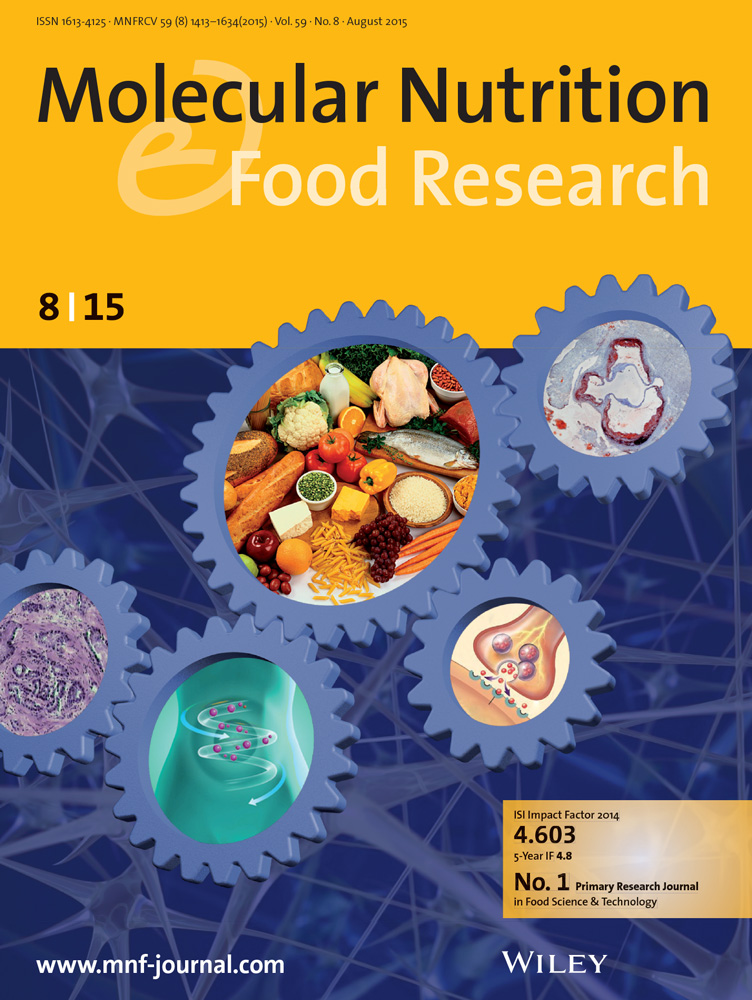Dietary Supplement With Tribulus terrestris L. Extract Exhibits Protective Effects on Neuroinflammation
IF 4.5
2区 农林科学
Q1 FOOD SCIENCE & TECHNOLOGY
引用次数: 0
Abstract
Among herbal dietary supplements, an extract called蒺藜提取物对神经炎症的保护作用
在草药膳食补充剂中,一种名为蒺藜的提取物(TT)被广泛使用。我们从TT中提取了一种抗神经炎症活性组分(TTAI),并通过活性和机制探索证明它有望被开发为一种改善神经炎症的膳食补充剂。采用定量实时PCR (qRT - PCR)和酶联免疫吸附试验(ELISA)评价TT提取物的抗炎活性。数据显示,TTAI可显著降低LPS诱导的BV - 2细胞炎症因子水平的升高。此外,TTAI可显著提高抗炎因子水平。我们应用代谢组学和转录组学来探索TTAI治疗神经炎症的途径和靶点。结果表明,在LPS诱导的BV - 2炎症模型中,TTAI可以逆转40种代谢生物标志物的表达,包括Cer、LPC、LPI、丝氨酸、lysin和精氨酸,TTAI可以有效调节235个基因的表达水平,包括Ptgs1、Pla2g7和Plin2。我们的数据表明,TTAI可能通过PI3K/AKT和MAPK信号通路起作用。本研究揭示了tai治疗神经炎症的作用机制,不仅证实了其作为膳食补充剂的潜力,而且扩大了其潜在的医学应用。
本文章由计算机程序翻译,如有差异,请以英文原文为准。
求助全文
约1分钟内获得全文
求助全文
来源期刊

Molecular Nutrition & Food Research
工程技术-食品科技
CiteScore
8.70
自引率
1.90%
发文量
250
审稿时长
1.7 months
期刊介绍:
Molecular Nutrition & Food Research is a primary research journal devoted to health, safety and all aspects of molecular nutrition such as nutritional biochemistry, nutrigenomics and metabolomics aiming to link the information arising from related disciplines:
Bioactivity: Nutritional and medical effects of food constituents including bioavailability and kinetics.
Immunology: Understanding the interactions of food and the immune system.
Microbiology: Food spoilage, food pathogens, chemical and physical approaches of fermented foods and novel microbial processes.
Chemistry: Isolation and analysis of bioactive food ingredients while considering environmental aspects.
 求助内容:
求助内容: 应助结果提醒方式:
应助结果提醒方式:


